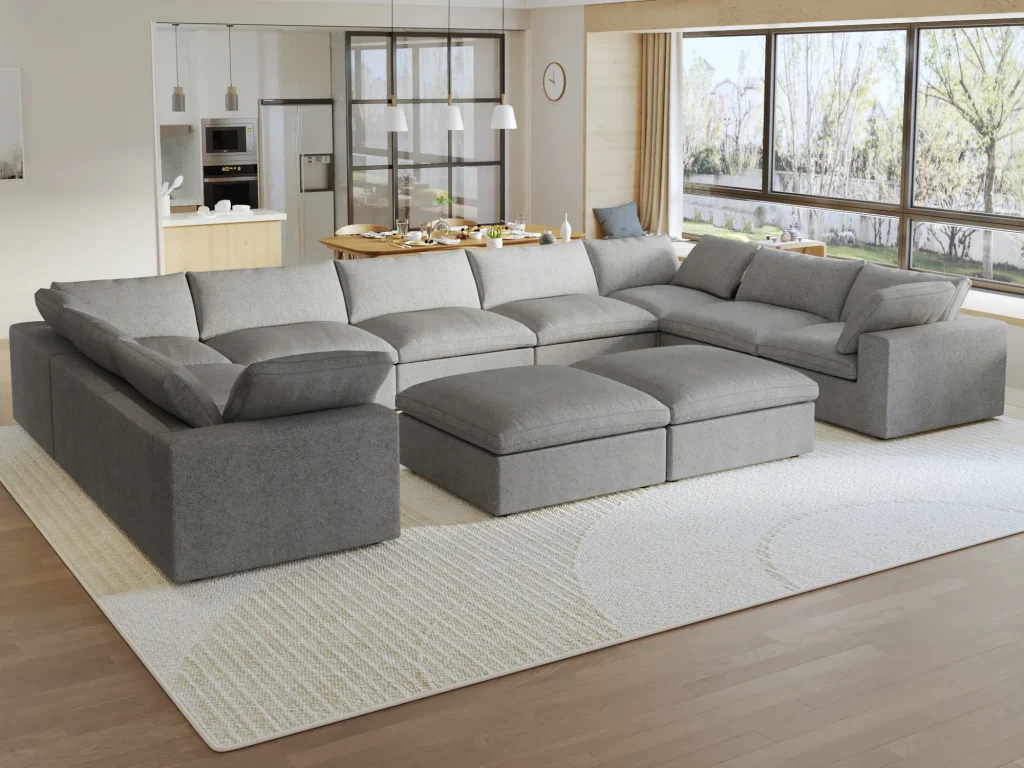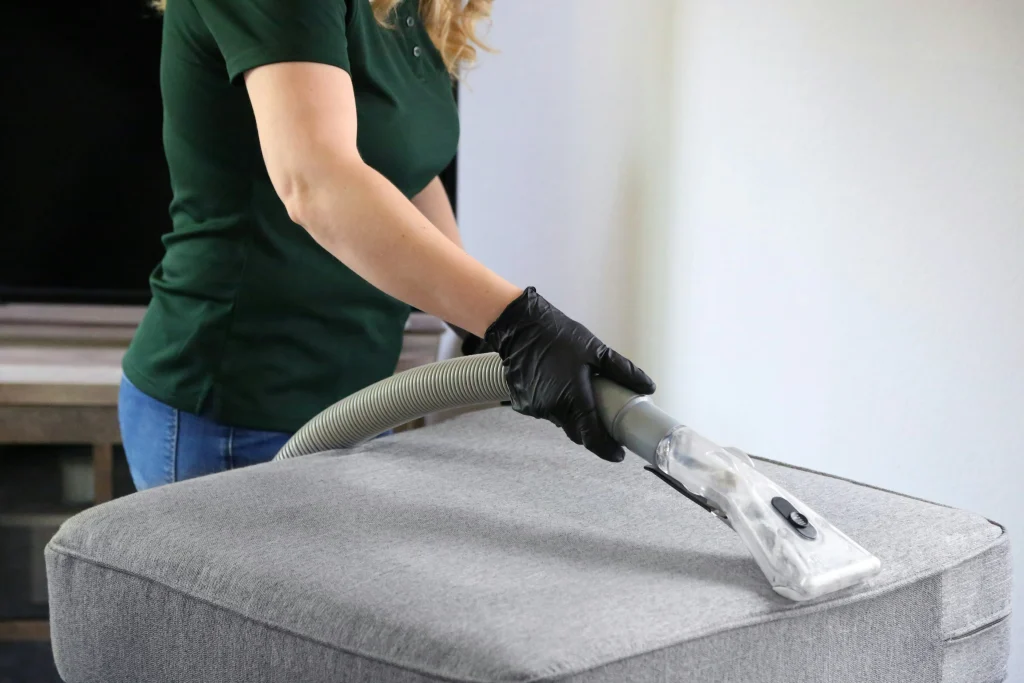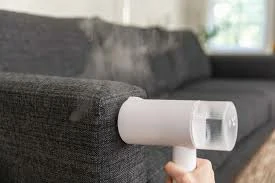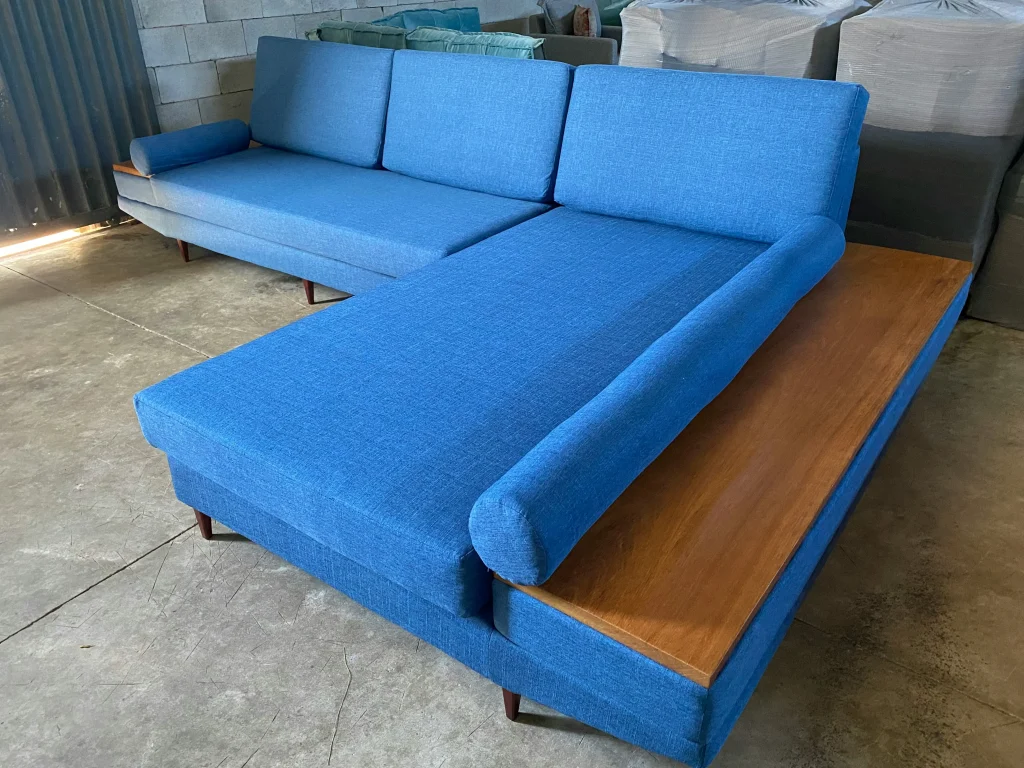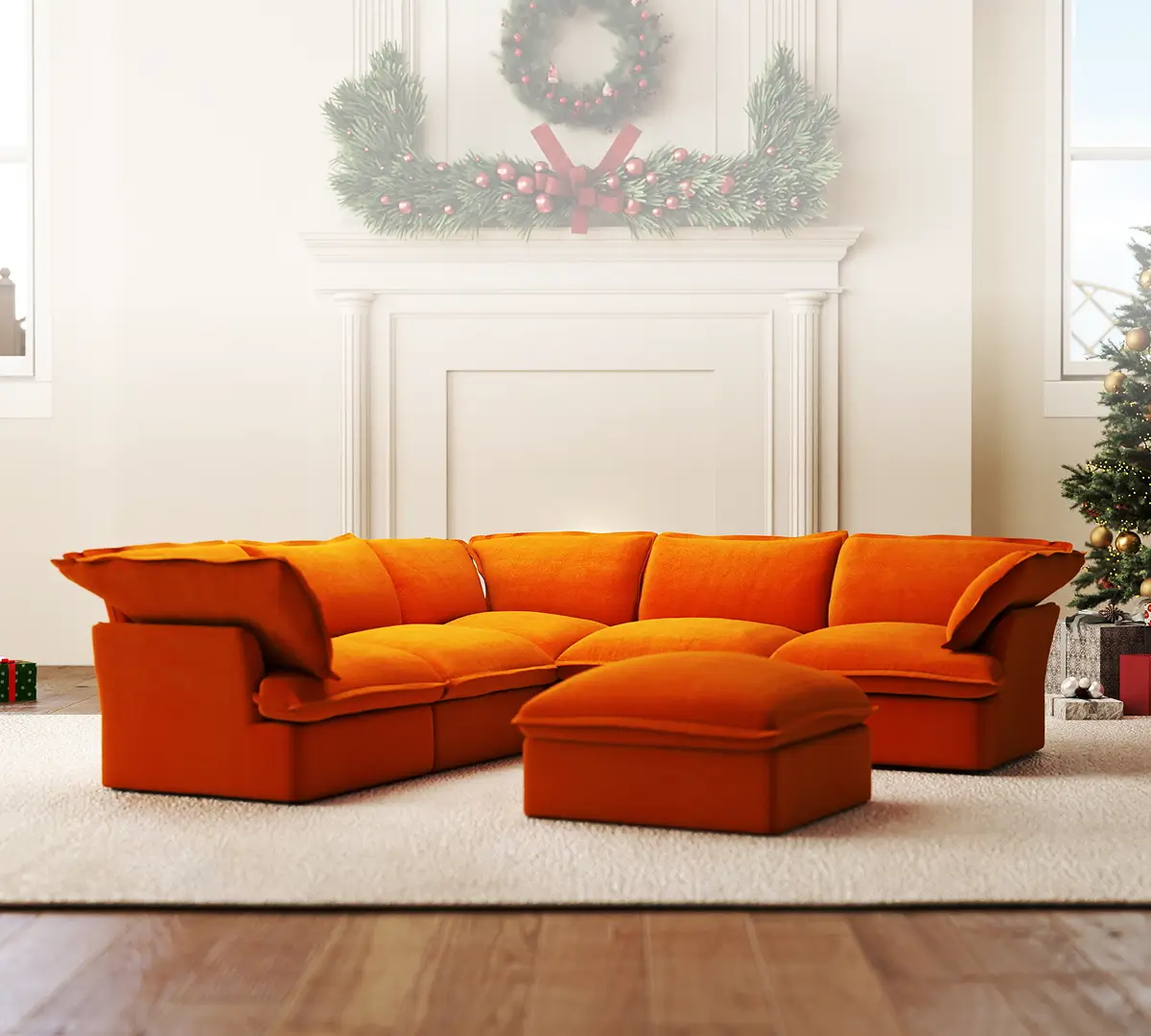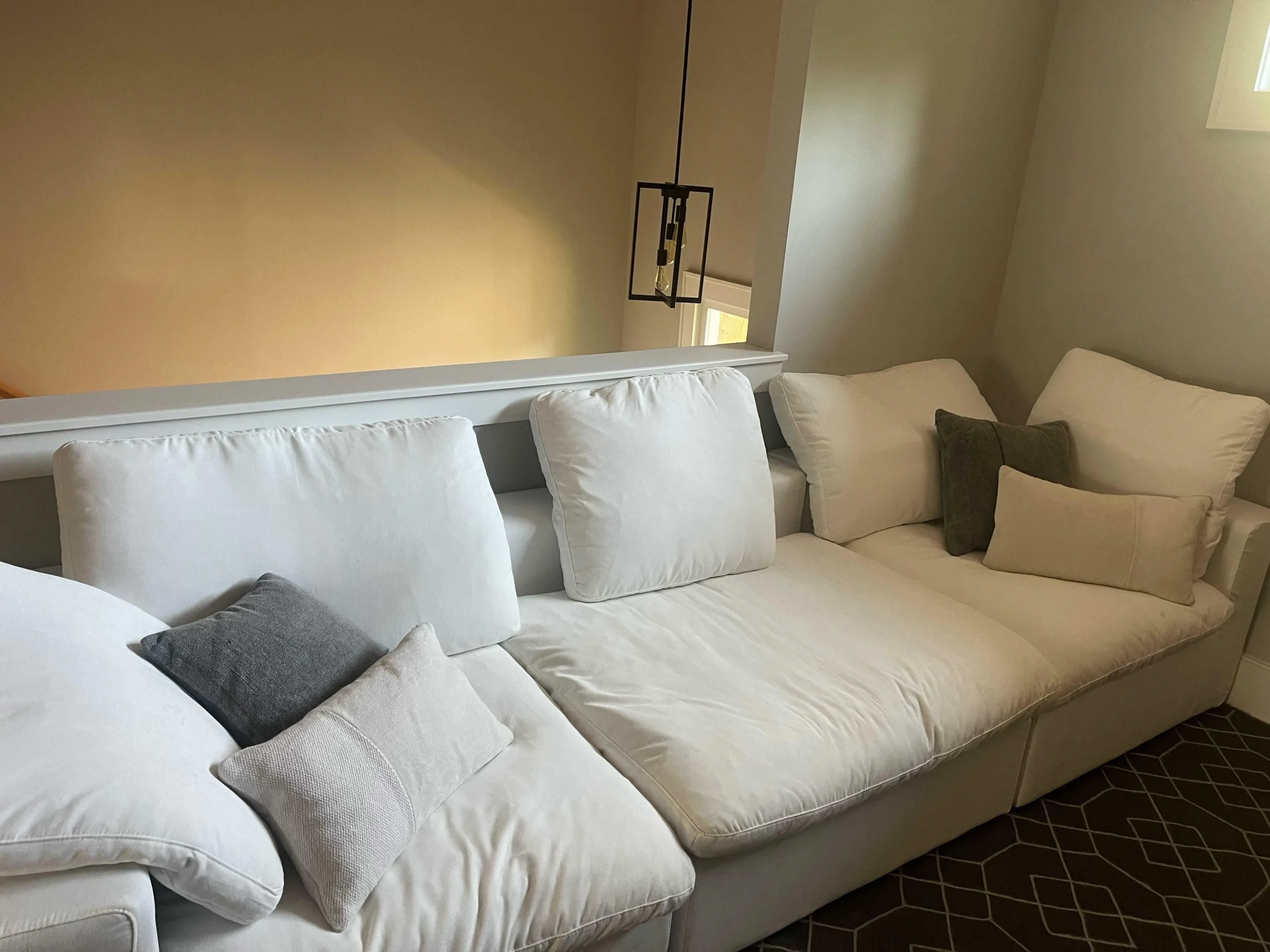A recent report said that bedbugs are becoming a growing issue in many big cities like New York and Chicago. These tiny pests are invading more than just beds—they're showing up in sofas too. So what can you do? This is where a washable sofa comes in handy. Being able to remove and clean your sofa covers easily might just save your home from a full-blown infestation.
How Washable Sofas Protect Homes from Bedbugs

What Are Bedbugs?
Bedbugs are tiny, flat insects about the size of an apple seed. They are reddish-brown and feed on human blood, usually while you sleep. They don’t fly or jump, but they crawl quickly and hide very well in beds, sofas, and other soft furniture.
How Do Bedbugs Spread?
Bedbugs travel by hitching rides on clothes, bags, luggage, and furniture. You can pick them up from hotels, buses, movie theaters, or secondhand items. Once inside your home, they hide in small spaces and can spread from room to room—especially in apartments or shared buildings.
How Can I Tell Bedbugs Apart from Other Similar-Looking Insects?
It’s easy to confuse bedbugs with bugs like ticks or baby cockroaches since they all share that classic reddish-brown, oval shape. But location is your biggest clue. Bedbugs love to tuck themselves into mattress seams, sofa crevices, and the folds of cushions—anywhere dark, narrow, and close to where you rest.
Here’s how you can tell them apart:
- Where You Spot Them: Bedbugs prefer beds, couches, and upholstered furniture. If you see tiny bugs along mattress piping, zipper seams, or between couch cushions, you could be dealing with bedbugs.
- How They Move: Bedbugs crawl quickly but can't jump or fly, unlike some other household pests.
- What They Look Like: While ticks and baby roaches can be similar in shape, bedbugs have flat, apple seed bodies and are about 4–7 mm long. Ticks are rounder, and baby roaches have a longer, more cylindrical look.
If in doubt, use a flashlight to check seams, tags, and cracks—especially around places you sleep or sit for long periods. Spotting them early can make a huge difference in avoiding a full-on infestation!
Are Leather Couches Less Prone to Bedbugs Than Fabric Sofas?
You might be wondering if leather couches offer any extra protection against bedbugs compared to fabric sofas. The short answer is: yes, a little—but not completely. Leather has a smoother, less inviting surface for bedbugs to grip and crawl on, so infestations are less common than with porous, woven fabrics. However, leather furniture isn’t totally immune. Bedbugs can still hide in seams, cracks, or underneath cushions. If you’re especially worried about bedbugs, leather may give you a slight edge, but regular cleaning and vigilance are still your best line of defense.
How Quickly Can Bedbugs Infest a Sofa?
If you’re worried about how fast bedbugs can overrun your couch, here’s the deal: it doesn’t take long. Once bedbugs find a cozy spot like your sofa, they can settle in and multiply before you know it. In as little as a month, a handful of bugs and their eggs can turn into a full-blown infestation. That’s because bedbugs develop from egg to adult in about 30 days, and a single female can lay hundreds of eggs throughout her lifetime. So, catching them early—and having washable covers ready—can make all the difference.
How Do Washable Sofas Help?
Washable sofas give you control and peace of mind. If you notice stains, dirt, or even signs of pests like bedbugs, there’s no need to panic. You just remove the covers and wash them. Regular care is easy to manage: a quick weekly spot clean and a deeper wash once a month is usually all it takes to keep your sofa fresh, hygienic, and bug-free. No harsh chemicals, no stress—just simple, effective maintenance that fits real life.

Washable Sofa
Who Benefits Most from a Washable Sofa?
A washable sofa does more than look good. It also helps protect your home from bedbugs. This is very useful in cities where bedbugs are common.
- People Living in Big Cities
Cities like Columbus, New York, and Philadelphia have more bedbugs. If you move often or rent, a washable sofa is a smart choice. You can clean it often to keep bedbugs away. - Families with Kids or Pets
Kids and pets can leave crumbs, fur, and spills on the sofa. These things can bring in bugs. With a washable sofa, you can clean the covers and stop problems early. - People Who Want a Clean Home
If you live in an old building or an apartment, bedbugs can move between rooms. Washing your sofa covers helps keep your home fresh and bug-free without using strong chemicals.
How to Choose the Right Washable Sofas
Not all washable sofas offer the same level of convenience. To find one that truly supports a cleaner, healthier home, ask yourself these key questions:
Are All the Covers Removable and Washable?
Check if the sofa’s seat, back, arm, and base covers can all be taken off and cleaned individually. Full coverage means fewer hidden spots for dirt or pests.
Is the Fabric Built for Frequent Washing?
Look for tightly woven, washable fabrics that won’t shrink, fade, or lose shape after multiple cycles. Durability is key if you plan to wash often.
Is the Sofa Easy to Take Apart or Modular in Design?
Sofas with tool-free assembly or modular sections are much easier to clean thoroughly. You can access every corner—especially important for pest prevention in tight spaces.
Extra Tips: How to Make Your Washable Sofa More Bug-Resistant
Taking a few extra steps can help keep pests like bedbugs from turning your sofa into their home. Here’s how to boost your sofa’s defense:
Vacuum and Clean Regularly
Use a vacuum with a crevice tool to reach deep into seams, folds, and corners. This helps remove crumbs, dust, and anything that might attract bugs.
Inspect After Travel or a Move
After returning from a trip or moving into a new place, check your sofa carefully. Look along seams and under cushions for signs of pests like tiny dark spots, shed skins, or live bugs.
Essential Tools for a Thorough Bedbug Check
Wondering what you need to inspect your sofa—and other furniture—for bedbugs? Don’t worry, it’s not a secret agent tool kit, just a handful of everyday items can do the trick:
- A bright flashlight: Bedbugs love to hide in dark seams and tiny cracks. A powerful flashlight lets you spot even the smallest stowaways.
- Rubber or disposable gloves: Inspecting up close means getting into nooks and crannies. Gloves protect your hands from dust, dirt, and whatever else you find.
- A thin, sturdy card: An old credit card or a similar piece of plastic works wonders for sliding into tight seams, helping you dislodge anything sneaky hiding inside.
- Double-sided tape: Wrap a bit around your card to trap any insects or debris you coax out of hiding—much better than chasing tiny pests around your living room.
- A magnifying glass: Adult bedbugs are about the size of an apple seed, but younger ones are even smaller. A magnifier makes it easier to spot bugs, eggs, or the telltale specs they leave behind.
Once you’ve gathered these simple tools, you’ll be prepared to give your sofa (and any other piece of furniture) a bedbug inspection worthy of Sherlock Holmes—no panic, no mystery.
Use a Sofa Protector or Encasement
A washable sofa cover or protective encasement adds an extra barrier that pests have a harder time getting through. It also makes regular cleaning quicker and easier.
What About Bed Bug Interceptors?
Bed bug interceptors are simple-but-clever tools you can use to boost your sofa’s defenses. These are smooth, multi-layered plastic dishes that sit under each furniture leg. The trick? Bed bugs trying to climb up get trapped in the outer moat, thanks to the slippery sides they can’t escape. This keeps pests from reaching your sofa and also works in reverse—catching bed bugs that try to leave your furniture as well.
Interceptors also double as a low-effort monitoring system. By regularly checking how many bugs end up in the traps, you’ll get a clear sense of whether you’re winning the battle or if the problem is spreading. For best results, keep interceptors in place for several months—up to a year if you’re in a high-risk area or tackling an ongoing issue. It’s a hands-off way to stay one step ahead, without resorting to harsh chemicals or constant worry.
Is Heat or Steam Treatment Effective for Removing Bed Bugs from Furniture?
Absolutely—heat and steam are both powerful methods for tackling bed bugs hiding in sofas, chairs, or any upholstered furniture. Here’s how each approach fits into a real-world routine:
Steam Cleaning: A good-quality steamer, especially one that reliably produces temperatures above 120°F, can wipe out bed bugs and their eggs on contact. Glide the nozzle slowly along seams, crevices, and all surfaces—just be careful not to soak the fabric. Use a microfiber cloth over the steamer tip to spread the steam evenly and boost heat. Let your furniture air dry fully (a fan helps) before using it again.
Heat Treatment: Bed bugs simply can’t survive in temperatures over 120°F. If you can place loose cushions or other removable parts into a large, sealable plastic bag and leave it in direct sun—especially on a scorching summer day—you can heat-treat them naturally. For larger infestations or hard-to-treat items, professional companies use industrial heaters to raise the temperature throughout an entire room or item.
Freezing as a Backup: If you live somewhere cold or have a deep freezer, exposure to below-freezing temperatures for a few days can also do the trick—though heat is usually speedier.
For best results, combine heat or steam with regular cleaning and vacuuming. Pay close attention to seams and hidden corners, and always follow safety instructions when using steam near outlets or around delicate fabrics.
These treatments, while effective, work best as part of a comprehensive, ongoing pest control plan to ensure every hiding spot is covered.
How to Use a Steamer to Eliminate Bed Bugs from Your Sofa
When you suspect bedbugs, a steamer can be your secret weapon. Used correctly, it kills both bugs and their eggs—without harsh chemicals. Here’s how to do it right:
- Always double-check the manufacturer’s guidance for your steamer.
- Wrap a microfiber cloth around the nozzle and secure it with a rubber band. This not only contains the steam but helps focus the heat where it’s needed most.
- Glide the nozzle slowly along seams, cracks, and crevices—these are prime hiding spots for bedbugs. Don’t forget to work across all flat surfaces as well.
- Steam until the fabric is damp (not drenched). The heat is what does the job, not the moisture.
- It’s normal for the furniture to need up to 24 hours to dry fully. Speed things up by running a fan and opening windows, but avoid using direct heat (like a space heater), as this can be a fire risk.
Regular steaming, especially after travel or if you’ve recently moved, adds another layer of defense, alongside washable covers and routine cleaning.
Can Freezing Kill Bed Bugs in Fabrics or Furniture?
Yes—freezing can help eliminate bed bugs from fabrics and some furniture, as long as you do it correctly. If you have removable sofa covers and enough space in your freezer, you can place infested items inside for a thorough chill. Bed bugs and their eggs usually can't survive temperatures below 32°F (0°C) for several days.
Here’s how to make this method work:
- Seal Up Soft Items: Place the covers, cushions, or small fabric pieces in a heavy-duty plastic bag. This keeps bugs from escaping and stops moisture from getting in.
- Freeze for Several Days: Most experts recommend leaving items in the freezer for at least 3–4 days at a consistent, deep freeze (not just the frostiest part of your fridge).
- Thaw and Wash: Once they've been frozen, let items return to room temperature before removing from the bag. Then wash and dry them as usual for extra peace of mind.
Keep in mind: This trick works for smaller items you can fit in the freezer, but it won’t help with an entire sofa or anything too large. Use freezing as just one part of your larger bed bug prevention plan—regular cleaning and inspection are still essential.
Why Residual Insecticide Sprays Matter
Because bedbugs are expert hiders, they don’t just stick to the sofa—they’ll sneak into carpets, curtains, walls, and even behind wallpaper. That’s why professionals often recommend using a residual insecticide spray. These sprays keep working for weeks after application, targeting any bugs that might emerge from their hiding spots later on.
Bedbugs are also notorious for their patience—they can go months without feeding. So, a spray with lasting power helps ensure that any stragglers lurking out of sight are dealt with over time, not just on contact. This long-lasting approach gives your cleanup routine and sofa protectors a crucial boost, especially when trying to break the cycle of re-infestation.
Can a Bed Bug Sofa Protector Eliminate an Infestation Alone?
While a good sofa protector or encasement offers solid first-line defense, it can’t solve a bedbug problem by itself. These covers help by blocking pests from burrowing into your sofa and can trap ones that are already hiding inside. But bedbugs are clever—they don’t just stick to sofas. They can live in carpets, along baseboards, behind electrical outlets, and even within the walls.
Using a couch cover as part of your regular routine makes a lot of sense—especially for prevention or catching an issue early. If you’ve seen only a few signs, a protector can slow things down and make cleaning easier.
But if you notice ongoing bites or spot multiple signs of an infestation, a sofa cover alone isn’t enough. In those cases, it’s wise to take bigger steps, like a thorough cleaning, or consulting a pest control professional, to really get on top of the problems.
Should You Toss Furniture If It Has Bedbugs?
Seeing bedbugs in your furniture can be alarming, but throwing out your sofa or chairs isn't always the only answer. In fact, many pieces—especially those you love or ones that are in good shape—can often be treated and saved.
If the piece is old, broken, or not worth the hassle, tightly wrap it in plastic before disposal to prevent spreading bedbugs while moving it out. For newer or high-value furniture, there are a few remedies to consider:
- Professional Heat or Steam Treatments: These can thoroughly kill bedbugs hiding deep inside cushions and seams.
- Leaving Furniture Outdoors (in Freezing Temperatures): If the weather allows, bedbugs can't survive sustained, extreme cold.
- DIY Cleaning: Vacuum thoroughly, use a stiff brush on seams, and launder removable covers in hot water if possible.
In summary: Only toss infested furniture if it's beyond repair or you don’t want to invest time in treatment. Otherwise, proper cleaning and professional services often do the trick—saving your favorite spot to lounge.
When to Seek Extra Help for Bedbugs
A sofa protector definitely adds an extra layer of defense, but it's not a magic fix. Even with a cover on your couch, bedbugs can still hide out in nearby places—think carpets, walls, or little cracks around your living room.
If you start noticing more signs—like itchy bites that keep popping up, little dark spots, shed skins, or if you spot actual bugs—even after washing covers and using a sofa protector, it's time to bring in some backup. A persistent problem usually means the bugs have spread beyond just your furniture.
Don't wait it out or try every DIY solution. Call a local pest control expert who knows how to inspect your home, locate where the bugs are hiding, and recommend a treatment plan that really works. Acting sooner can help stop a small problem from becoming a big, expensive headache
How Do Professionals Treat Bedbugs in Large Furniture?
So, what if bedbugs have already made themselves at home deep inside your sofa or other hefty pieces of furniture? That's where the pros step in with some serious backup. Pest control experts often use steam or targeted heat treatments to tackle these stubborn pests.
Steamers: High-powered steam treatments can reach deep into cushions, seams, and frame joints where bugs love to hide. The heat from the steam kills bedbugs and their eggs on contact—no chemicals needed.
Heat Chambers: Some pest control companies come equipped with large heat chambers or boxes designed for furniture. They’ll place your infested sofa inside and crank up the temperature (we’re talking above 120°F), which safely eliminates bugs at all life stages without damaging the upholstery.
Both these methods are tough on bedbugs but safe for most fabrics. In severe cases, pros may pair heat with other pest management tools to make sure every last bug is gone. If you're dealing with a major infestation, professional heat treatments offer a thorough solution—saving your favorite seat and your peace of mind.
Recommended Washable Sofas for Bug-Prone Homes
Looking for a sofa that’s easy to clean and helps keep bugs like bedbugs out of your home? Here are some great washable sofa options designed for comfort, cleanliness, and everyday life.
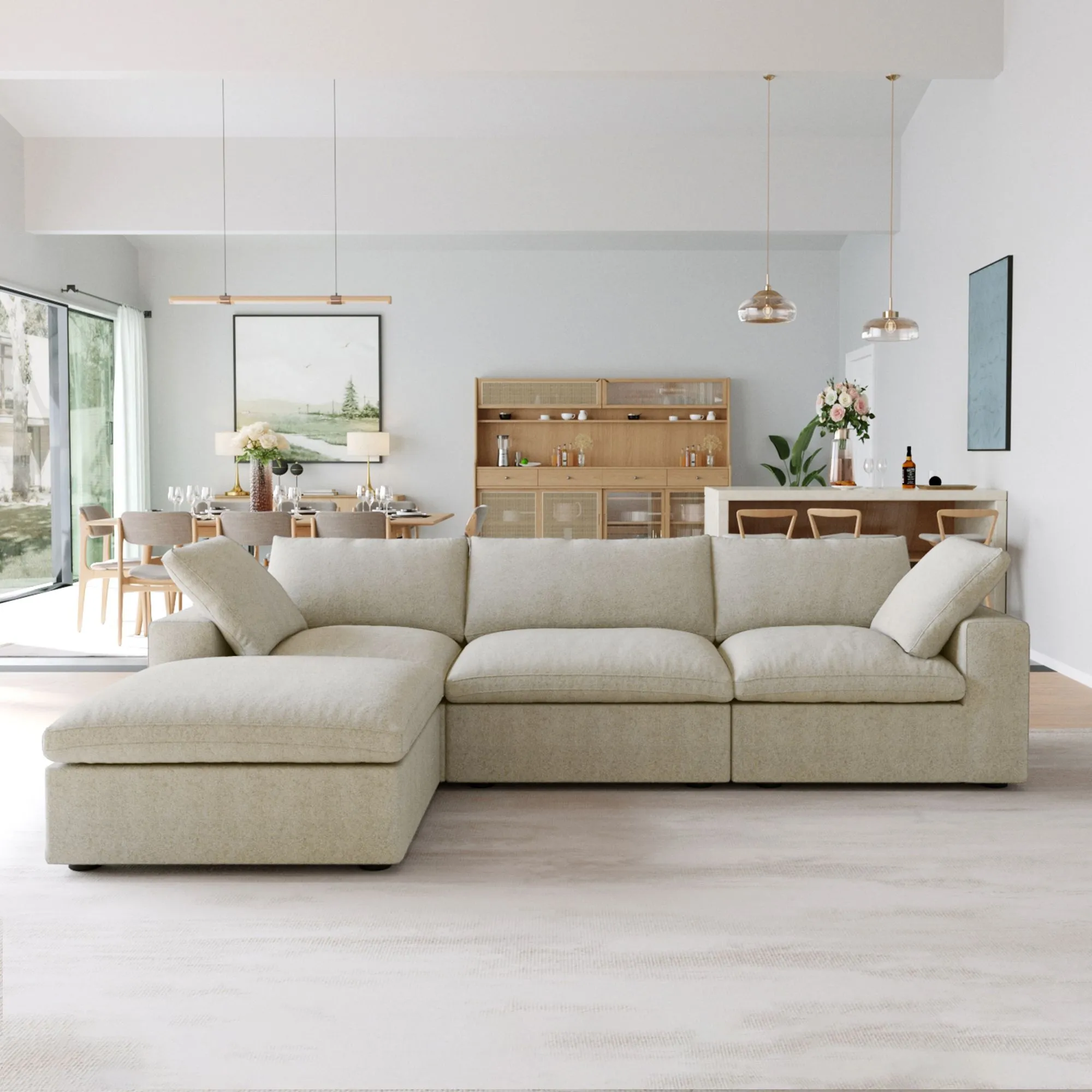
Sky Cloud Sectional Sofas
Sky Cloud Sectional Sofas come with large, soft cushions and fully removable covers. You can wash each part separately to keep things clean and fresh. Perfect for families or anyone who wants a cozy space without worrying about bugs or messes.

Sky Classic Linen Cloud Sofas
Made from breathable linen fabric, the Sky Classic Linen Cloud Sofa feels light and airy. It’s easy to care for, with covers that come off and go right in the wash. Great for homes that want simple style and protection from crumbs, dust, and pests.

Sky Plus Velvet Cloud Sofas
If you love a soft velvet look but still want easy cleaning, the Sky Plus Velvet Cloud Sofa is a smart pick. The covers are washable, so you don’t have to worry about spills or hidden bugs. It brings comfort and cleanliness together.

Sky Cloud Sofas
This all-around option is ideal for everyday use. With washable covers and a simple design, the Sky Cloud Sofa is easy to clean often. A great choice for homes in cities where bedbugs are a concern.
Conclusion
Living in a city with rising bedbug problems can be stressful, but small choices like choosing a washable sofa can make a big difference. With removable covers and easy cleaning, these sofas help you stay one step ahead of pests, mess, and daily dirt. Whether you have kids, pets, or just want a cleaner, safer home, a washable sofa gives you both comfort and peace of mind. In bug-prone areas, it’s not just a smart buy, but it’s a smart way to live.

